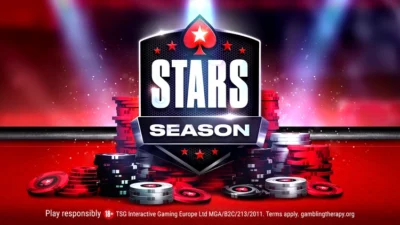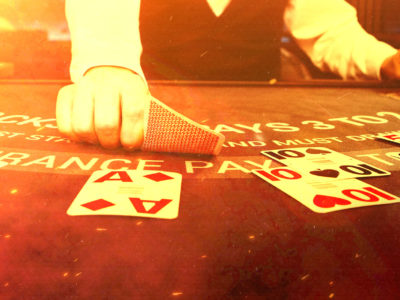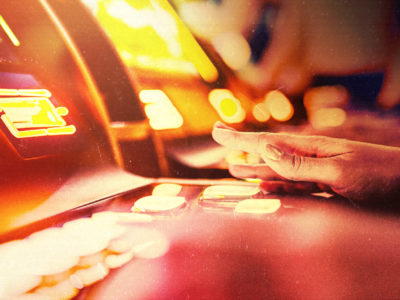We all know the term, and we are all still living in the world it created. But what was the poker boom, and what did it mean for the game?
DEFINE “BOOM”
Of all the ways we could begin to quantify the impact of the poker boom, let’s start with this one. If the poker boom hadn’t happened, you wouldn’t be sitting there reading this article, because I wouldn’t be sitting here writing it.
The “poker boom” is the accepted shorthand for the sensational increase in interest in poker that took place, broadly speaking, in the first decade of the 21st century. This was the period during which poker — and Texas hold’em specifically — went from being a game played by a small minority of people in a strictly controlled setting to a global game played by billions, often in their own homes.It happened thanks to three overlapping and mutually-perpetuating developments, which created something of a perfect storm.
First, there was the advent of online poker, which meant games were available 24 hours a day, 365 days a year, and easily accessible via a computer.
Second, television companies began to cotton on to the TV potential for poker, peeking at hole cards thanks to under-the-table cameras, and hosting made-for-TV events in which charismatic new stars exchanged thousands of dollars.
And third, there was Chris Moneymaker, a genial everyman from Tennessee who won the World Series of Poker (WSOP) Main Event in Las Vegas in 2003, earning $2.5 million after qualifying online. If Moneymaker could do that, so could anyone. And everyone started trying very hard to be the one.
THE STATS BEHIND THE BOOM
The statistics of the poker boom tell a very clear story, and it doesn’t matter what set of figures you examine. In 2000, for example, the Main Event of the World Series of Poker had 512 players. The tournament had been growing steadily every year since its inception in 1970, pointing to a gradual uptick in interest in the game. But over the next six years, with Moneymaker’s 2003 WSOP win in the middle, the attendance figures went bananas: 8,773 players turned up in 2006 for a tournament that awarded its winner $12 million. There has never been fewer than 6,352 players during any regular WSOP Main Event ever since.This kind of increase is replicated across the spectrum, both in the online and bricks and mortar game. The first running of the World Championship of Online Poker (WCOOP), which took place in 2002, had nine events and 2,452 entries. By 2010, there were 62 tournaments and more than 140,000 entries to those events.
Then there’s the EPT, which launched in Europe in 2004, and whose first Main Event attracted 229 players. Back then, the buy-in was €1,000 and so the first prize pool was €229K. But as the boom truly ignited, the EPT’s momentum became unstoppable. In 2009, Pieter de Korver won the EPT Grand Final in Monte Carlo, where the buy-in was €10,000 and 935 players paid it. De Korver won €2.3 million, nearly 30 times as much as Stevic.
BOOMING ALL OVER THE WORLD
During all this time, players were drawn to poker from areas it had never previously penetrated. For its first couple of centuries of life, poker had traditionally been an American pastime, where families often gathered around the kitchen table to play for pennies. But the same simply wasn’t true in other parts of the world.
However, the internet allowed new players from across the globe to learn about poker and then to play it. Hotbeds began to emerge in countries that previously had no poker tradition.
Scandinavians were among the first players to make a clear impact on the game, ripping up the rulebook and redefining what “aggression” meant. Then German players came to the fore, applying rigorous study methods to poker strategy and coaching one another to new heights. Tours such as the Latin America Poker Tour, the Asia Pacific Poker Tour and Eureka Poker Tour visited even more countries, inviting players into the brick and mortar game, who might never have played live before. The boom reverberated through Brazil, Argentina, Australia, Macau, Romania and Bulgaria, among other places, with standard bearers in each region emerging and signing to pro poker teams.
Obviously North Americans continued to prosper too, with college students turning dorm rooms into poker dens, making themselves millions and becoming cover stars on glossy magazines. Even though this particular strand of the boom ended abruptly after Black Friday in 2011, the game was now so popular in all of the other locations that poker’s vibrancy continued undiminished.
HOW THE BOOM CHANGED POKER
With so many millions playing poker in so many different locations, new twists on established games began to emerge. The online game allowed developers to experiment with new variations, but other games cropped up organically.
Somewhere close to the peak of the boom, open-face Chinese poker suddenly became an enormous craze, with top players seemingly spending every spare moment away from the main tournament tables playing high-stakes side games in this particular variant. Everybody’s home game had a new spin too, with Texas hold’em or Omaha remaining a bedrock and innovators adding or taking away cards, or changing the betting. It demonstrated poker’s flexibility and kept the game fresh.The boom also lay the foundations for the Super High Roller circuit, where the most skilled elite found new opponents among the world’s richest businessmen. There were already huge private cash games with the same field complexion, and tournaments followed suit. Buy-ins hit $50K, $100K and more, and then, of course, the $1 million mark. It was this environment that bred short-deck, or 6+ poker, where the gulf in skill between the most and least talented narrowed. The boom set all of these balls rolling.
POKER BOOMS IN POPULAR CULTURE
Whereas back in the 1990s, you would encounter relatively few people who knew the rules of poker, the man on the street of 2021 quite probably has played at least once or twice. There are poker games now in many bars or pubs, while you can also play on mobile devices, even if it’s only for a couple of minutes here and there.
As the boom was just getting started, the Matt Damon and Ed Norton vehicle Rounders brought a mostly convincing depiction of poker to mainstream Hollywood audiences, and it remains a firm favourite among poker fans. But you’ll often see poker in numerous other entertainment scenarios these days — and sometimes the games will be more than just cliched royal-flush-beats-quads predictable fare. There was even a dedicated “poker consultant” on the most recent Paul Schraeder film, The Card Counter.It’s all thanks to poker’s greater exposure, and a higher understanding among the audience. All of which leads on from the poker boom.
Although few people claim that the poker boom is still ongoing, the game continues to operate at a level far higher than anybody could have predicted pre-2000. Online card-rooms regularly still have tens of thousands of players enjoying poker simultaneously, while the field sizes in major events are many hundreds of times bigger than they were two decades ago.
The rate of acceleration of the poker boom may have necessarily slowed, but poker still occupies a very high plateau. You are, after all, still reading this article. And I am still writing it.
Back to TopView Other Blogs























